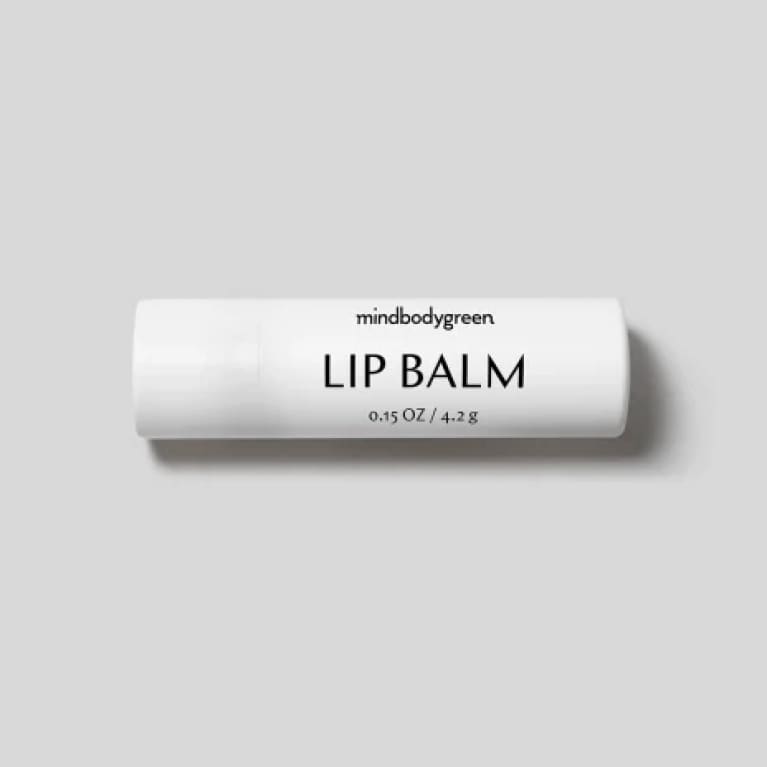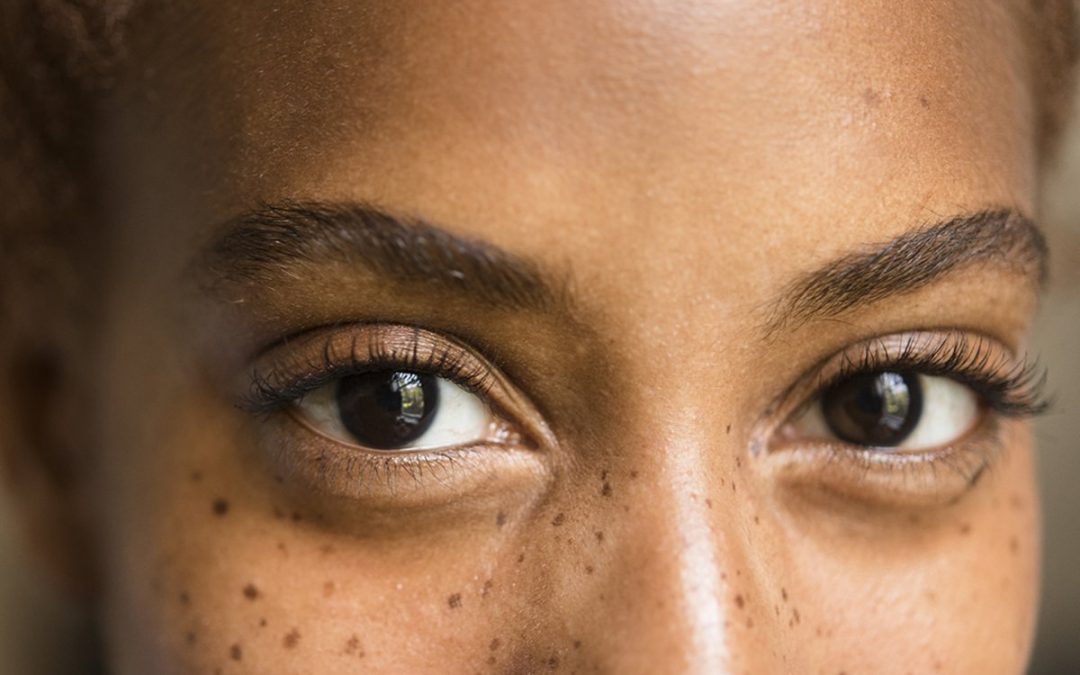
Our editors have independently chosen the products listed on this page. If you purchase something mentioned in this article, we may earn a small commission.
August 31, 2022 — 9:34 AM
Endless products on the market claim to reverse dark under-eye circles or cover them up completely. Many of these products can certainly help ease the look of these shadows, but have you ever wondered why they happen in the first place?
If you feel like you’ve tried everything, you might want to start over with a new goal: Rather than trying every product under the sun to lighten those half-moons under your eyes, you should work to find the root cause.
Start here—experts explain the science behind why you might have dark circles and what to do about them.
lip balm
Moringa-based formula which feeds your skin antioxidants, instantly hydrates, and protects your lips

Dark circles appear as discoloration below the eye. “This can either be due to hyperpigmentation of the skin, or thin skin that allows blood vessels and underlying tissue to show through,” explains board-certified dermatologist Rebecca Marcus, M.D., FAAD.
This discoloration is starkly different from eye bags in terms of cause and appearance. Eye bags are consistent outpourings of tissue below the eye that are “usually caused by fat herniation as the tissue becomes less firm with age,” Marcus says.
Dark circles are also different from general eye puffiness. “Puffy eyes usually refers to swelling around the entire eye, which may be a result of an allergy, dietary factors (salt, alcohol), illness, or other sources of inflammation,” Marcus says. Some of these same factors can lead to dark circles, too—more on that below.
Completely getting rid of dark circles isn’t always possible—but identifying what’s causing yours can at least help you on your skin care journey:
1. Exhaustion or lack of sleep
“Poor sleep is associated with more skin dryness, which can further worsen the appearance of under-eye shadows,” explains board-certified dermatologist and YouTube creator Andrea Suarez, M.D., FAAD.
So contrary to popular belief, sleep is not directly linked to dark circles but rather exacerbates their appearance. “Not getting enough sleep or poor-quality sleep may accentuate the problems that make eyes appear tired,” Marcus echoes. So even if you’re getting eight hours, subpar sleep quality may be to blame.
Allergies can cause eye puffiness, along with dark circles. “Seasonal allergies and allergic conjunctivitis causing you to rub your eyes can drive more inflammation and fluid accumulation under the eyes, which worsens the appearance of dark circles,” Suarez says. So if you’re prone to allergies, you may want to check in with your doctor to learn about your options for managing them.
If you squint when you look at a screen or read, you may want to consider heading to the ophthalmologist for a checkup. “Excessive time staring at the screen may cause eye strain and subsequent engorgement of the surrounding blood vessels and, therefore, dark circles,” Marcus explains. Dark circles or not, your eyes will thank you for taking breaks from the screen every now and then.
“Genetics certainly can play a role, with some people more prone to either hyperpigmentation or under-eye shadowing as a result of the shape of the anatomy around the eye socket,” Suarez tells mbg.
In fact, one study found family history to be the largest predictor of dark circles. This doesn’t necessarily mean you’ll be unable to lighten them; however, it may explain the initial reason you’re experiencing under-eye shadows in the first place.
Like we mentioned, dark circles can be caused by increased hyperpigmentation—something that has a long list of initial causes. Hyperpigmentation, by definition, is when melanin in the skin is produced in excess, causing the skin to darken.
“This is particularly exacerbated by sun exposure and inflammation and tends to be more of a risk in those with darker skin tones,” Marcus says about hyperpigmentation. This increase in visual hyperpigmentation in darker skin tone transfers over to sun spots, dark spots caused by breakouts, and so on.
“With age, collagen and elastin loss leads to thinner skin, making shadows more obvious,” Suarez says. These same factors lead to crepey skin, fine lines, and wrinkles alike.
As your collagen decreases, you may consider supplementing to level out the production and degradation—here’s everything you need to know about starting the process.
Suarez notes that medical conditions can also lead to dark under-eye circles. A few common examples include anemia, hypothyroidism, poor nutrition, malabsorption syndromes, and certain metabolic syndromes.
If you needed another reason to keep up with adequate hydration, let it be this: “If you are dehydrated, this can cause the tissues of the body to shrink, including under-eye skin, making dark circles look more noticeable,” Suarez says.
A lack of adequate water consumption has been linked to an increase in skin dryness overall, so a few extra cups will do much more for your skin (and full-body) health than prevent dark circles.
What to do about dark circles.
Understanding your skin is the first step toward caring for your skin. Now that you know more about the causes, let’s get into solutions, shall we?
Like we mentioned previously, dry skin around the eyes can lead to more prominent dark circles. In order to keep the skin nourished, hydrated, and protected, you may consider adding an eye cream to your skin care lineup.
A few ingredients Marcus suggests looking out for in your next eye cream include caffeine, niacinamide, peptides, hyaluronic acid, and gentle retinol.
Not sure where to look? We searched high and low for the very best creams for dark circles—here are our top 18 picks.
2. Master under-eye concealer.
You can’t change many of the causes listed above, so concealer may be your best bet at managing your dark circles. Once you find a concealer you swear by (here are a few A+ options), follow these application tips to use it right for every purpose—nixing dark circles included.
3. Get enough high-quality rest.
If a lack of high-quality sleep can lead to dark circles, that means adequate rest just might do the trick. Improving the quality of your sleep is no easy task, especially given the fact that there’s a plethora of causes for the lack of shut-eye.
If you’re on the path to sleeping better, check out these 15 tips to improve the quality of your slumber.
Now you know that dehydration contributes to dry skin and may even lead to more prominent dark circles because of that. Consuming enough water comes more easily to some but can be a stressful task for others.
If you’re not sure where to start, we asked experts for their best hydration tips—here’s what they said.
5. Consult a health care practitioner.
Even if you drink your daily dose of H2O, get high-quality rest, and use eye cream, your dark circles may be coming from something else that might not offer a quick fix. It’s important to consult your doctor about severe, unchanging dark circles as they may be a symptom of a larger, full-body health concern. As Suarez says, “If your dark circles persist, it is always a good idea to have an annual checkup with your doctor, including a physical exam and blood work, if necessary.”
The best way to treat dark circles is to look for the root cause. A few reasons your under-eye shadows may be especially noticeable include exhaustion, allergies, dehydration, age, skin tone, and genetics. Health conditions can also cause dark under-eye shadows, which is why you may want to consult your doctor if your eye shadows are persistent. Again, dark circles are different from eye bags—here’s a breakdown on the latter if you’re curious.

lip balm
Moringa-based formula which feeds your skin antioxidants, instantly hydrates, and protects your lips
lip balm
Moringa-based formula which feeds your skin antioxidants, instantly hydrates, and protects your lips


